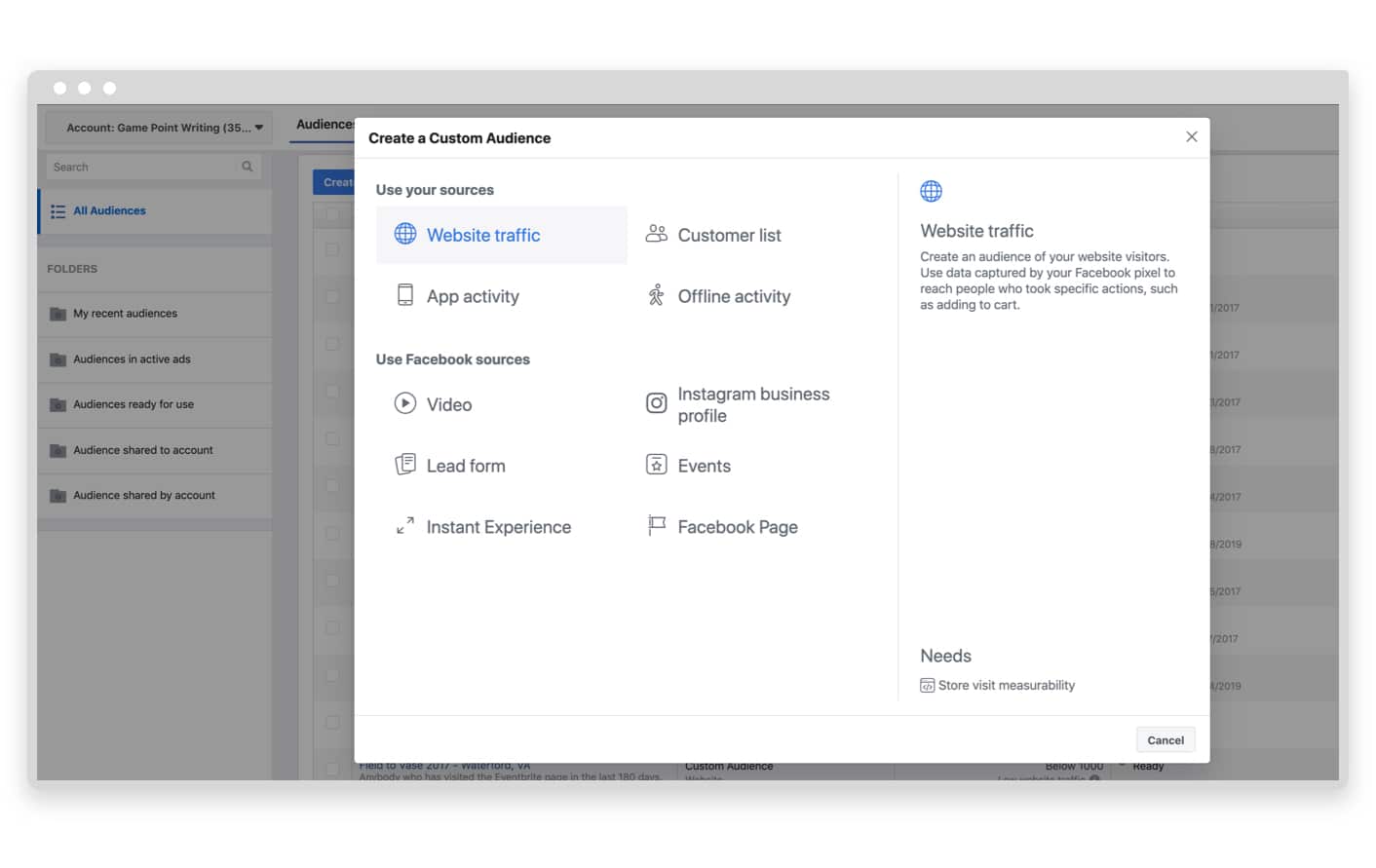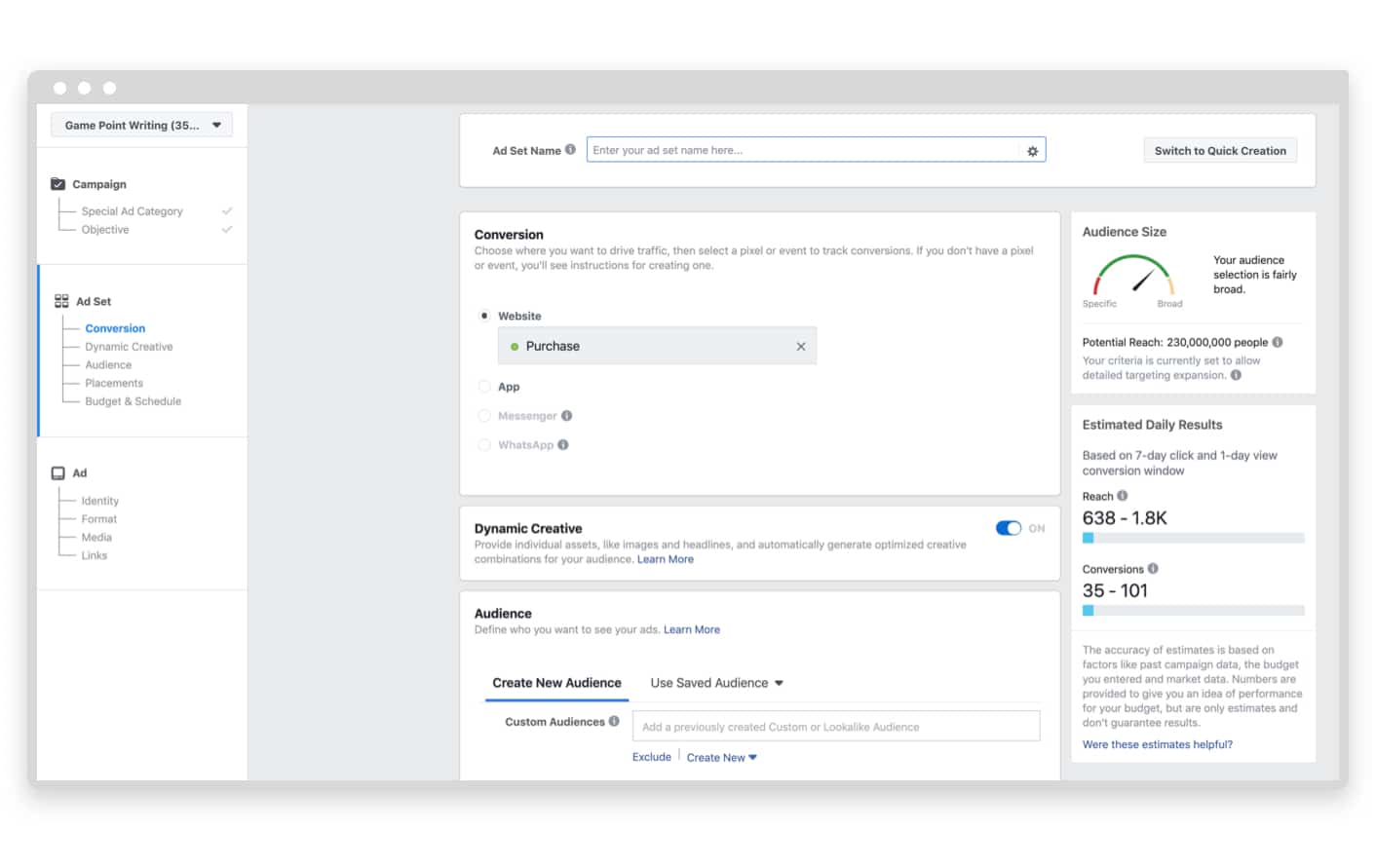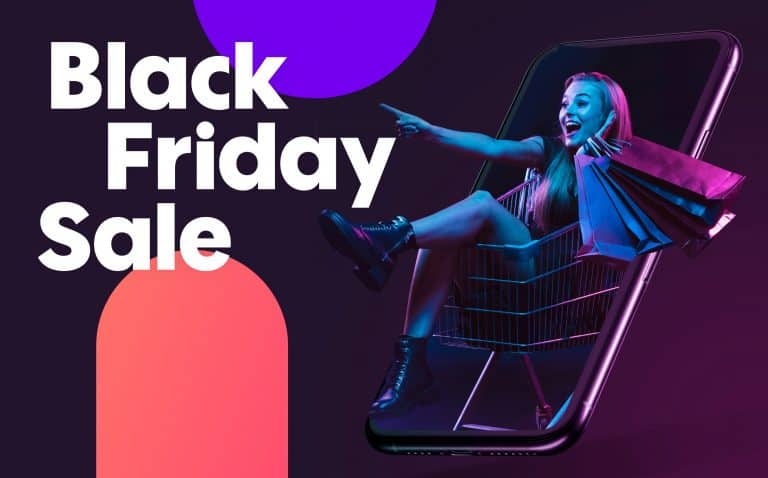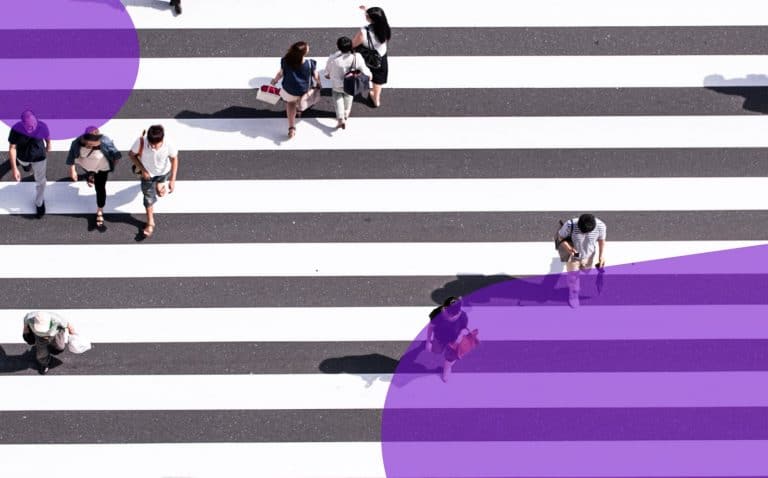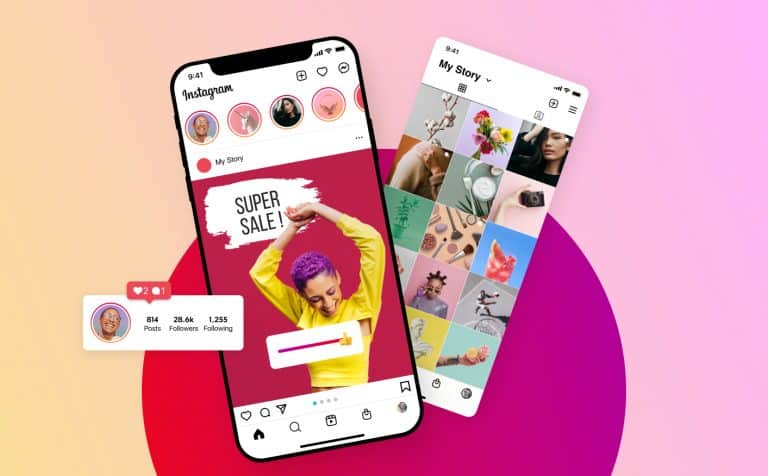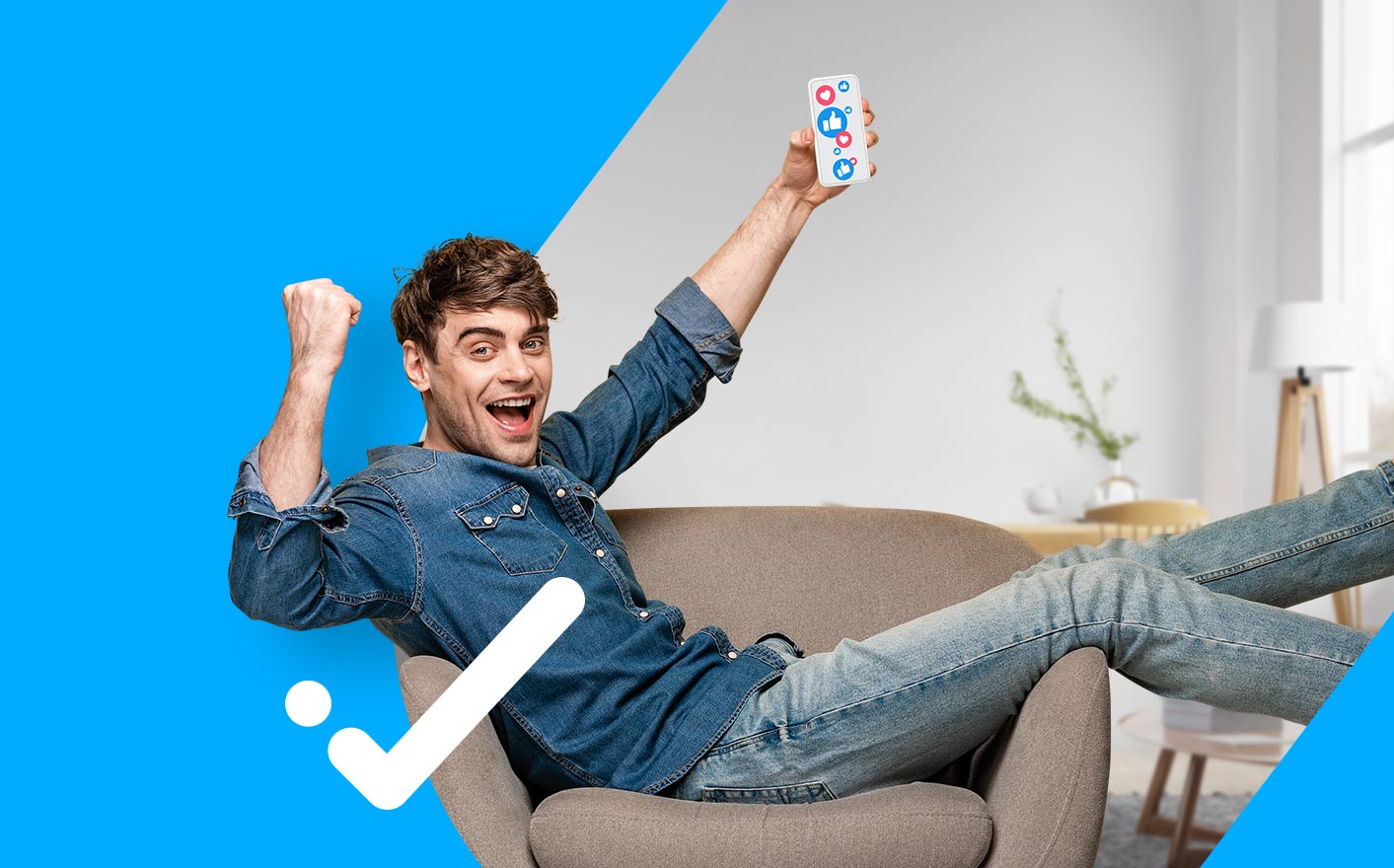
How to optimize Facebook ads
We know you want to learn how to optimize Facebook ads like a pro.
If you’ve struggled with under-performing campaigns, scaling successful campaigns, or are just looking for some insight into how to increase Facebook ad performance, you’ve come to the right place. We’ve written extensively on Facebook ads in the past, but today, we’re going to zoom in on the actual optimization tactics you can use to get the most out of your Facebook ads. Before we get to the techniques, however, we’d like to take a quick moment to set the foundation.
First, this isn’t a post for beginners, and we make the assumption you’re already familiar with Facebook ad creation, advertising costs, and have even seen some examples of really good Facebook ads. If you haven’t, you might want to check out any of these related topics:
- How to Create Your First Facebook Ad
- How Much Does it Cost to Advertise on Facebook?
- The Best Facebook Video Ad Examples for 2019
You should try our Facebook Ads Troubleshooter – Let us ask you a few questions and we’ll figure out how to make your campaign stronger.
Second, while much of the information in this post could be used as general Facebook advertising advice, it will focus on teaching you how to optimize for conversions. This means to get the most out of this post, you’ll need an understanding of the Facebook Pixel, and ideally, some experience with conversion-oriented campaigns such as eCommerce or lead generation.
Note: For those new to Facebook ads, the Facebook Pixel is a tool that helps you utilize some of the more advanced features of Facebook ads like conversion tracking and retargeting. For an in-depth look at the Facebook Pixel, check out our post: Facebook Pixel: Install, Optimize and Boost Your Facebook Campaigns.
If that sounds like your cup of tea, let’s do this!
Who needs to optimize?
Literally, everyone running Facebook ads should be optimizing their campaigns on a regular basis. Just how ‘regular’ you should be conducting ad maintenance (daily, weekly, monthly) depends on many factors like your ad budget, your audience size, your overall dedication to results, and lots of other considerations.
For this post, we’re going to assume (at minimum) a weekly ad optimization schedule.
Note: The term “ad optimization” can cover a huge range of activities, from editing some ad copy to major strategic shifts that involve not only your Facebook ads, but your landing page funnels and video content. Significant strategic shifts should not be executed on a weekly or daily level unless you have a massive ad spend, large piles of statistically significant data, or lots of experience with Facebook advertising. Generally speaking, conduct large strategy changes on a monthly or quarterly basis after a thorough review of a particular campaign.
What can optimization do for you?
OK, now on to the good stuff—how can Facebook ad optimization grow your business? In a direct-response setting, a simple ‘More revenue (or leads) from cheaper conversions’ would be a great answer, but there’s so much more to Facebook ads than that. Used correctly, Facebook ads maintenance and optimization can have huge effects on several different areas of your marketing efforts.
The benefits of ad optimization generally fall into three categories: Ad campaign recovery/turnaround, scale, and business insights. Let’s examine each category one at a time.
Ad campaign recovery/turnaround
Raise your hand if you’ve ever launched a Facebook ad campaign and it, how do we put this… it flopped. Be honest.
Yes, we run Facebook ads at Promo.com, and we’ve had our share of less-than-successful campaigns. All advertisers experience this, and the sooner you accept it will happen to you too, the faster you can turn your campaigns around by optimizing different aspects of your account.
Note: Just because a Facebook ad doesn’t produce results right away does not mean it’s a bad ad. There are tons of variables that can be adjusted until you start getting conversions.

When you’re not getting the results you expected within several days or several hundred dollars you know you need to adjust your tactics, or perhaps even your overall strategy. Either way, recognizing this early on and making the appropriate changes is key to getting better results.
Scale
The other end of the digital advertising success spectrum is ads that do so well (ROAS, CPA, etc.) that you need to spend more! One optimization technique is to increase your ad budget, obviously, but it goes far deeper than that. If your target audience is small, only increasing your budget might oversaturate it and drive up your ad frequency, causing users to become annoyed.
You may need to look for new audiences, try different conversion paths, or something else. We’ll cover some ideas to scale high-performing Facebook advertising campaigns in the next section.
Business insights
We tend to think of Facebook advertising solely in terms of conversions, traffic, video views, and Likes, but there’s an entirely different way Facebook can provide value to a business—data.
As part of the ad optimization process, you have to look at a lot of data points that your ads create as they’re out there in the Newsfeeds of your target audiences. Every click, every video ads view percentage, every Comment is being calculated—these are called metrics. When you pair metrics with dimensions (audience demographics, device type, ad placement) you can derive all types of valuable business insight.
For example, let’s say you own an ecommerce store for umbrellas and you’ve been running conversion-oriented Facebook ads for a few months. When you look at your data, you see that there are far more sales among women than among men, even for the unisex umbrella designs. Furthermore, you see that ads shown on Instagram are outperforming ads on Facebook by a significant margin. Armed with this data-backed insight, a clever marketer might decide to double down on Instagram by creating an influencer marketing program featuring female Instagram accounts. This would give them more (and different) types of content from their influencers, while also gaining access to new audiences through the influencers own following.
Even though those aren’t necessarily Facebook ad optimizations per se, the insights that create that opportunity are derived directly from your advertising campaigns. Just a simple example to show the powerful insights that Facebook ad data can bring to your business, but you’d never find it if you weren’t constantly looking to optimize your campaigns.
Now, let’s dive into the list of Facebook ad optimization techniques you can use to grow your business. We’ll cover what the technique does, how to execute within the Facebook Ads Manager, and when each technique might be effective.
Facebook ad optimization techniques
Buckle up, because we have a lot of ground to cover. These techniques are not listed in order, and they range from something you could implement into an existing campaign to something you would need to start over to accomplish.
Campaign Objective
If you’re looking for conversions (e-commerce sales or leads) but you’ve optimized your campaign for engagement, you’re likely going to end up with a lot more Likes, Comments and Shares on your ads than actual sales. This is because in addition to your targeting, Facebook serves ads to people who have a history of completing the action you optimized your campaign for. What most people don’t realize, however, is that Boosted Posts are optimized for engagement by default; not conversions.
To change your campaign objective, you’ll have to start over from the Ads Manager dashboard and choose an objective from this screen. 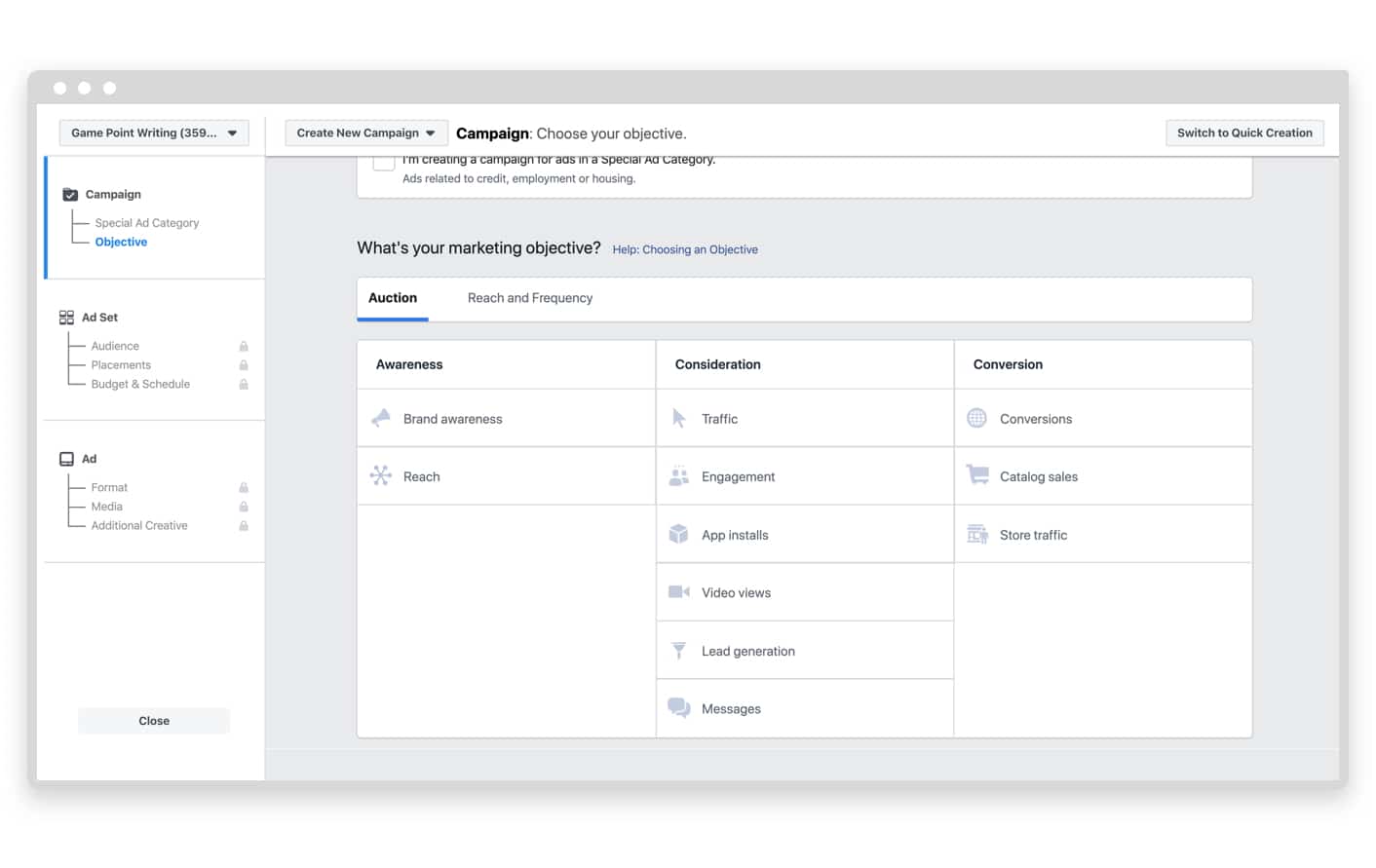
Always choose your desired end result. For example, if you want people to buy from your website, choose Conversions and not Traffic.
Note: The Lead generation option will include the use of a form on Facebook and will bypass your website completely. These can be very effective, but sometimes lead to lower lead quality. If you choose Lead generation as your objective, you may also want to test Conversions with your standard lead generation form on your website.
Campaign budget optimization (CBO)
This is one of Facebook’s newest features, and it also might be the most significant release in the last few years. In the past, most campaign budgets were managed at the Ad Set level, but CBO allows you to now do this at the Campaign level. This means that Facebook will now choose how to distribute your budget among all Ad Sets within each Campaign.
It might sound a little scary to give up this much control to Facebook, but advanced Facebook advertisers are having a lot of success with CBO. Plus, it will be the standard budget optimization method sometime in 2020, so you should get used to it now.
To use CBO, just toggle the switch in this screen at the Campaign level in Ads Manager. 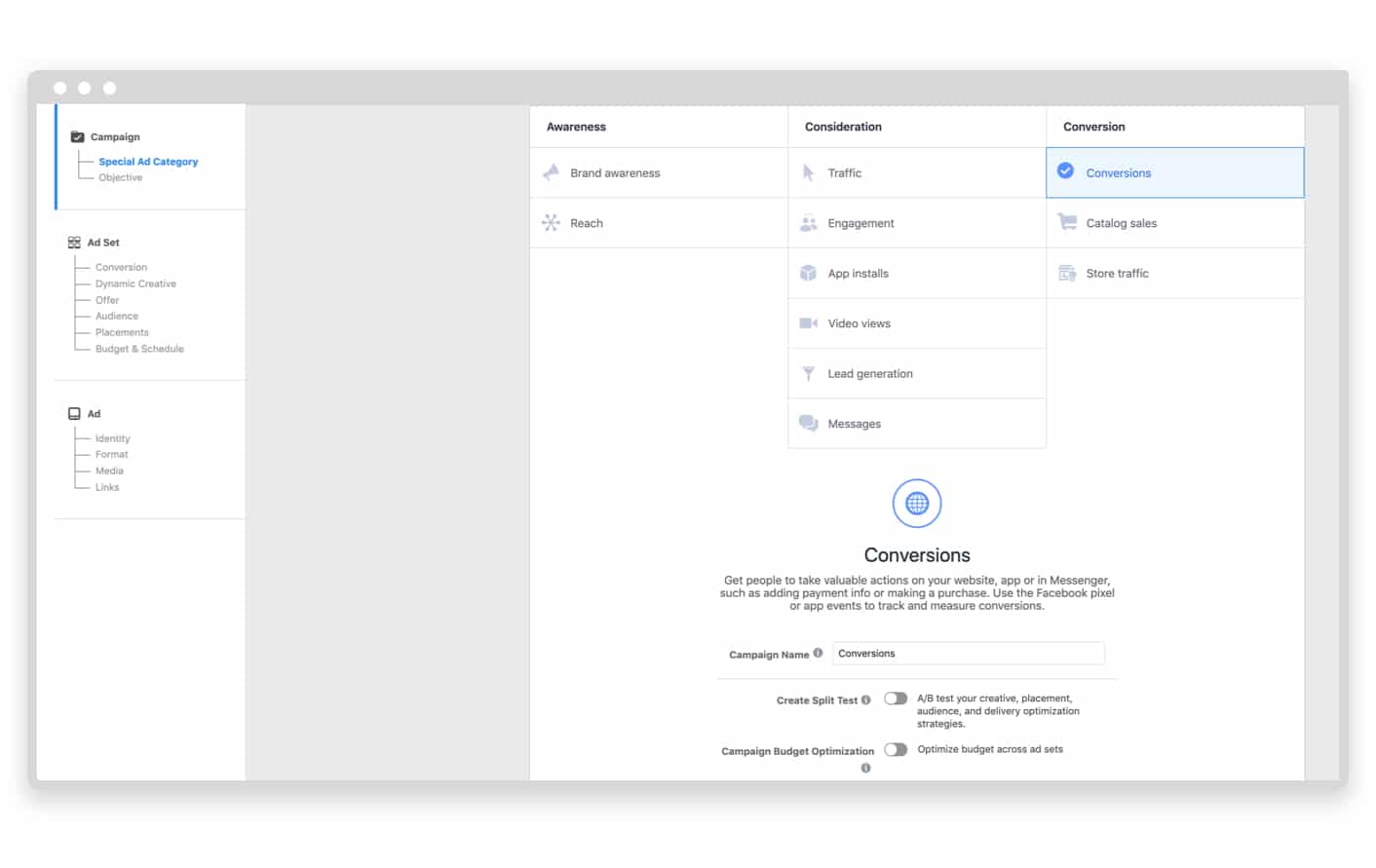
You cannot edit existing campaigns to a CBO model if they’ve already begun, so you would have to create a new campaign to use the CBO method.
Your offer
Most people jump straight into the Facebook Ads Manager when they think of “optimization,” but all of the tips in this guide should actually come after you have a rock-solid, proven offer—this is especially true for lead generation, but applies to ecommerce as well.
For example, are you certain (“certain” as in you have numbers to prove it!) that a 7-day free trial pass for your gym is more effective at generating new members than a discounted join offer? Yes, no, not sure? You would do well to test both offers with Facebook ads before spending too much time optimizing everything else in your digital marketing funnel.
Same for e-commerce—Does a $12.99 product with $5.95 shipping and handling sell better or worse than a product priced at $18.94 with free shipping? If you’re not sure, that means you have some work to do to make sure your offer is fully optimized.
Audience targeting
Back in the Facebook Ads Manager, the Audience tool is one of the most powerful ways you can optimize your digital ad campaigns. For every campaign you run, you’re going to want to target at least four different audiences, and more than that if you have a large budget.
We’ve written about audience targeting a bit before, but we’ll add that once you have several unique, interest-based audiences on Facebook, you’ll want to segment them at the Ad Set level within the same Campaign, all using the same creative. This allows Facebook to test which target audience responds to your ads better and shift budget in their direction, increasing your efficiency with lower cost-per-click and higher click-through rates.
Once you’ve mastered interest-based audiences and have a decent amount of website conversions, traffic, or video views, you’ll want to add Lookalike audiences into your testing process. For mature Facebook ad accounts with lots of conversions in their history, Lookalike audiences often account for their top-performing prospecting Ad Sets.
Additionally, do not forget about retargeting audiences. You need to build audiences for every type of interaction with your online presence, including but not limited to:
- Website traffic
- Video views
- Social profile engagement
These audiences should generally receive separate messaging, as they’ve already been exposed to your brand.
Ad Account organization
In the section above, we listed almost 10 different audiences that you should be testing in order to optimize your Facebook ads campaigns. If you don’t organize them properly, however, you’ll never reach full optimization, and here’s why.
Prospecting audiences need to be separated from retargeting audiences at the Campaign level, especially if you’re using CBO. Your retargeting strategy should be different than your prospecting strategy, and therefore you need to give each of them separate budgets so you can better track their effectiveness and make optimizations.
For instance, if you see that your retargeting campaigns are reaching high frequency, you need to scale back the budget for that campaign. Then again, if you’re getting positive results from your retargeting efforts, you may want to increase the budget on the prospecting side so that your retargeting campaigns are drawing from a large pool.
You’d never be able to recognize these opportunities for optimization if your prospecting and retargeting audiences were lumped into the same campaign, though, which is why proper Ad Account is vital to getting the most out of your Facebook campaigns.
To start retargeting, you’ll need to create Custom Audiences within the Facebook Ads Manager’s Audience tool. 
Ad creative
If you’re feeling pretty good about executing all of the optimization suggestions above, it’s time to move onto your ad creative. Beginner Facebook advertisers tend to over-value A/B testing their ads—instead of first taking care of everything listed above—but it can definitely have a significant impact.
In terms of actually executing creative optimizations, Facebook basically gives you two options:
- Use the split testing tool
- Use the Dynamic Creative tool
With the split test tool, you’ll set up an A/B test between two different ads and Facebook will perform a test and give you statistically significant results based on the parameters you set (budget, goal, etc.). If you go this route to test your images and copy, our suggestion is to use a substantial difference in each ad. For example, using a graphic of a close-up of a woman’s face vs. an illustration of an ebook is a substantial difference and different results in CTR. Using an Oxford comma in one line of ad copy but not in your other ad is an insignificant change, and likely a waste of time.
If you choose to go the Dynamic Creative route, you’ll basically upload several variations of images, headlines, and text copy and just let Facebook sort out which combination is most effective. There’s nothing wrong with either route, but Dynamic Creative can be especially useful if you’re not 100% sure which type of messaging has proven to work in the past because Facebook will find out for you.
To use the Dynamic Creative tool, simply toggle the switch at the during the ad creation process. 
Ad format
Beyond just the ad creative (graphics, videos, headlines, and text) used in your campaigns, the ad format can also affect engagement and conversion rate. There are several different ad formats within Facebook to choose from:
- Single image
- Single video
- Carousel
- Collection
You can also add an Instant Experience, which is basically a mini landing page hosted within Facebook that you create which appears when a user clicks your ad from a mobile device.
You’ll choose which ad format you’d like to use at the Ad level during the ads creation process. 
You’ll likely want to use this optimization technique after you’ve nailed down your key messaging and graphics that have proven results. If you’re A/B testing the ad creative and ad format at the same time, you’ll never know which variable is responsible for the difference in results.
Delivery
For more advanced Facebook advertisers, you can also optimize by delivery. If you’re running a website conversion campaign, but you’d like to the default optimization settings and instead have Facebook serve your ad to as many people as possible, you can do so by changing the delivery at the Ad Set level.
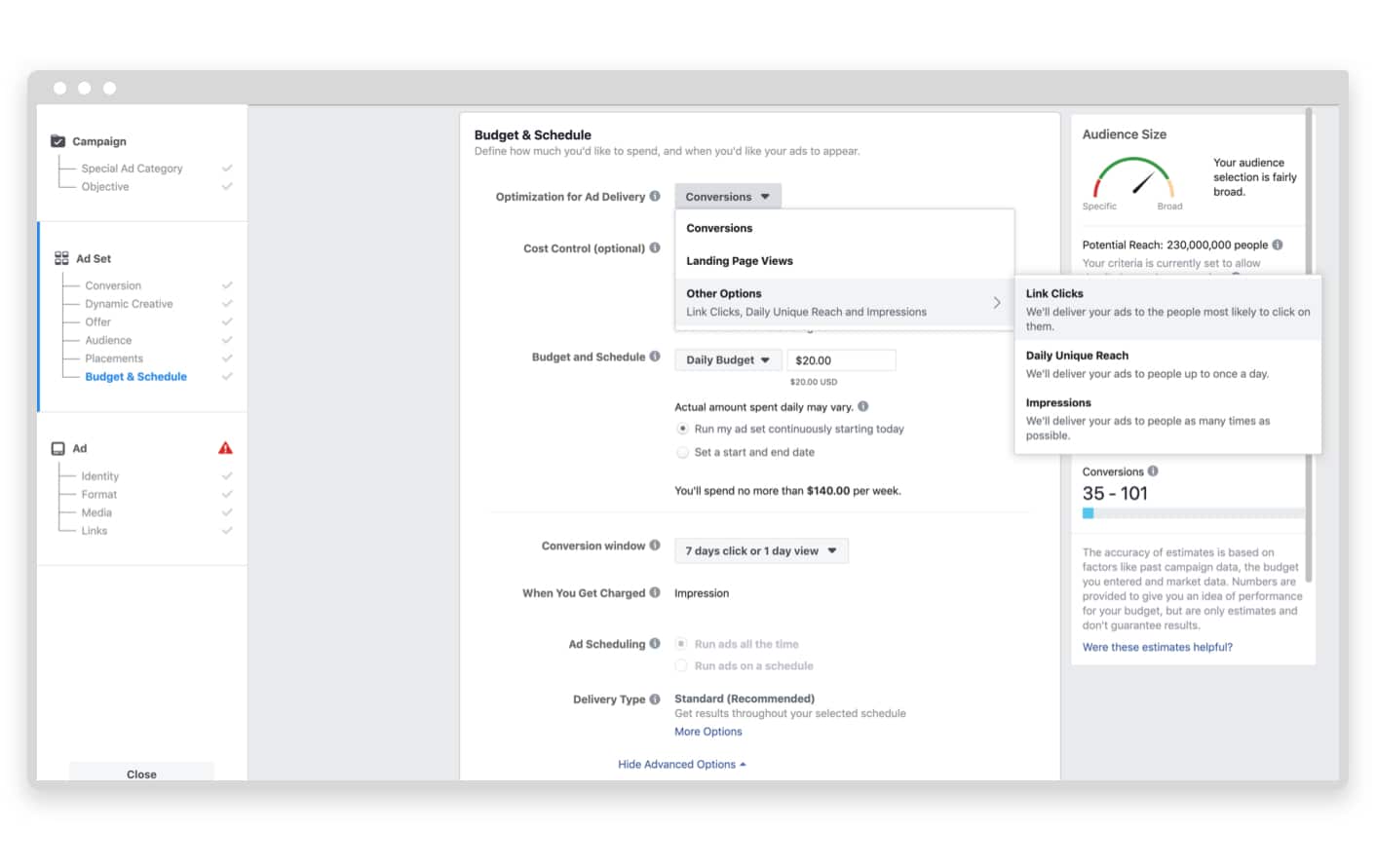
Unless you’re an experienced advertiser with a specific use case, we recommend using the default ad delivery optimization settings.
And that, friends, is how you optimize your Facebook advertising campaigns. By pulling those different levers and watching the outcomes closely, you can run highly efficient campaigns that get better over time.
Promo.com has some tools that can help you optimize your Facebook ads. Here’s just a small sample:
Image resizer: This tool allows you to repurpose images into different Facebook ad formats.
Video editor: You should definitely be testing videos vs. images in your creative set, and the easy-to-use Promo Editor helps you create stunning marketing videos in minutes.
Facebook ad creator: Our facebook ad creator puts the power of Facebook ads in your hands. Find footage from over 110M assets in our media library, customize to fit your brand and style, add your logo – and publish in mintues.
Facebook video ads templates: Not sure where to start with video ads? Then start with a proven template designed specifically for Facebook.
These are just a few of the ways Promo.com can help grow your business with Facebook ads.
[banner id=11501]
